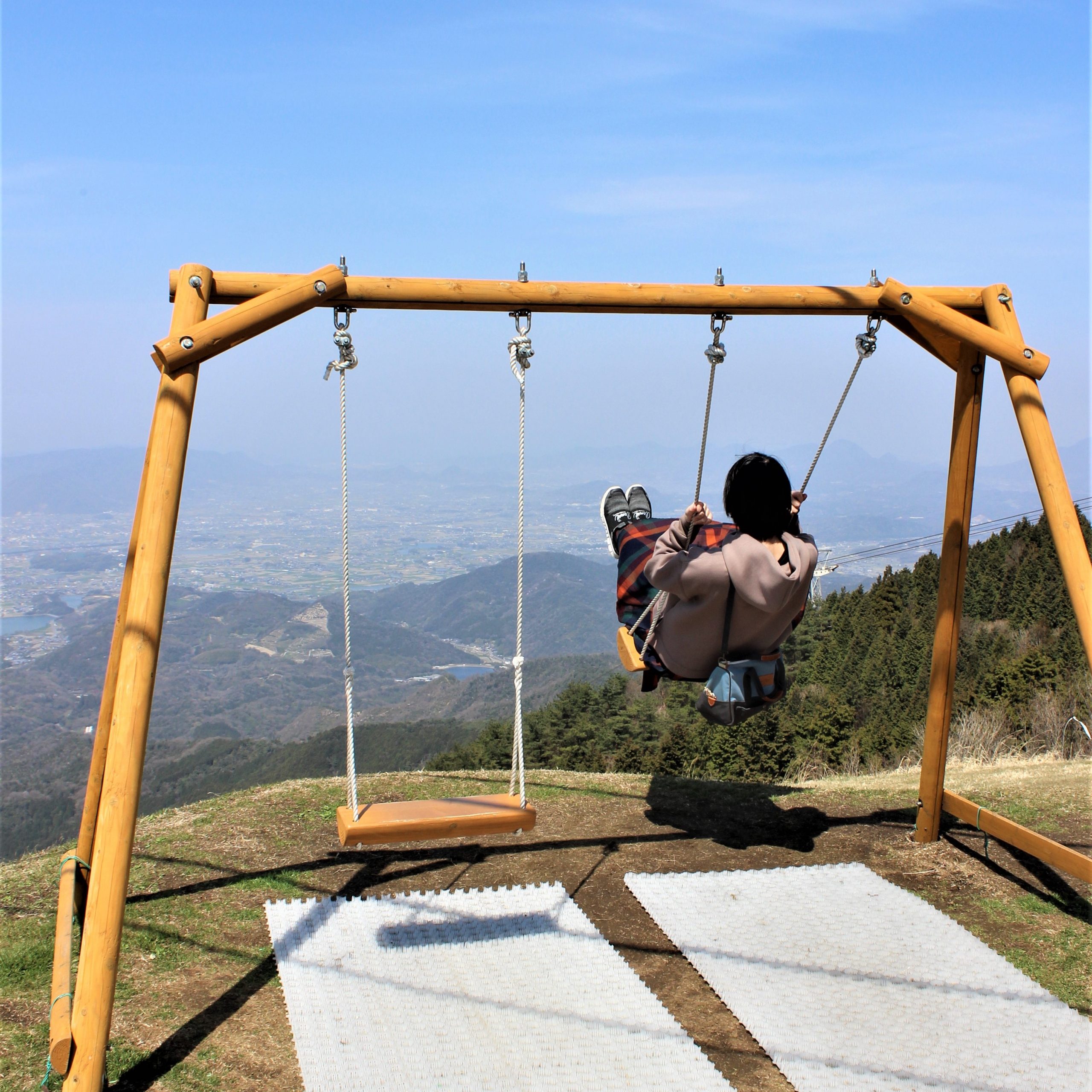View spots
The must-visit view spots in and around Kanonji.
1 Torii in the sky (Takaya Shrine)
It has been popular as a god of rice for a long time. A great view spot overlooking Kanonji city.
From the summit of 404m above sea level, you can overlook Kanonji City, and below you can see the vast Seto Inland Sea and Ariakehama, and if the weather is nice, you can even see Mt. Ishizuchi.

2 Sanka Bridge
It was called Sangabashi because it visited Kotohiki Hachimangu. A symbol bridge of Kanonji City, which was selected as one of Japan’s 100 Famous Bridges.
The current bridge was built in 1945, and the three arches over the Tada River form a beautiful arc.
In 2020, it was also certified as a recommended civil engineering heritage selected by the Japan Society of Civil Engineers.

3 Ariakehama
The beautiful sunset over the Seto Inland Sea has been selected as one of the “100 Best Sunsets in Japan”, and the beautiful shallow beach that stretches for 2 km grows naturally with beach plants.
100 selections of beaches in Japan. 88 beaches in Japan.

4 Zenigata sand painting (Kotohiki Park)
A scenic Kotohiki Park that is partly included in the Setonaikai National Park. There is a huge Kanei Tshouho coin-shaped sand painting with a circumference of 345m in the park, and it is said that it was made overnight. The view from the summit of Mt.

5 Ariakehama Natural Beach Botanical Garden
Ariakehama, which has a white sandy beach for 2 km, has many beach plants that are rarely seen in the prefecture, and is designated as a cultural property of the city as “Ariakehama beach plant community”.
You can enjoy pretty flowers one after another from spring to summer. In recent years, it has been attracting attention as a beach where “Chestnut tiger” flies.

6 Honen Pond & Stone Sculpture
In addition to historic buildings such as Japan’s first multiple arch concrete dam, Honen Pond (important cultural property of the country), Masatoshi Izumi, a production partner of world-famous sculptor Isamu Noguchi, is in the city. Stone carving works are placed in various places.

7 Isamu Noguchi Playset Park (Ichinomiya Park)
There are 22 playset sculptures designed by world-famous sculptor Isamu Noguchi. It is the second largest park in Japan after Moerenuma Park (Sapporo City). The playset sculpture is a space where all people, including children, young people, and the elderly, can feel the sky, the sun, and the universe and enjoy conversation with nature and the earth through the playset.

8 Kanonji Matsubara Museum of Natural Art (Kotohiki Park, Kanonji Matsubara)
It is said that there are 50,000 of them, and the 2,200 old pine trees around the Zengata sand painting show a splendid appearance. In particular, “Neraimatsu” on the east side of Kotohiki Park is a rare black pine with its roots exposed above the ground. The roots, which are about 1 m thick, spread out in all directions, and are truly an art created by nature. It has been selected as one of the 100 best white sand and green pine trees in Setonaikai National Park.

9 Ichiyaan
It is said to be the oldest haiku site in Japan, which was connected to the precincts of Kosho-ji Temple by Sokan Yamazaki, the founder of haiku. It was erected in the first year of Kyoroku (1528), and has been restored about four times since then, but it remains in its original shape. Some of the reeds of Lake Biwa, the birthplace of Sokan, are used on the roof of Ichiyoan. The name “Ichiyoan” comes from the fact that Sokan did not like to stay overnight for visitors.

10 Blanco in the sky
A swing in the Unbeji mountaintop park located at an altitude of 927m. There is no doubt that “Blanco in the Sky”, where you can row under your eyes, will be freed from everyday life and refreshed! You can overlook the Sanuki Plain and the Seto Inland Sea. The sunset over the Seto Inland Sea is especially beautiful. When the visibility is good, you can see the Seto Ohashi Bridge and Okayama / Hiroshima prefectures.

11 Kanonji Flower Calendar
Kotohiki Park, which has been selected as one of the “100 Best Cherry Blossom Spots in Japan” and has about 450 Somei Yoshino flowers, and Awai Shrine, which is famous for about 3,000 hydrangeas with colorful flowers such as blue, purple, and pink. Introducing flower tour spots.

12 Mirror in the sky (Chichibugahama)

13 Shiudeyama

